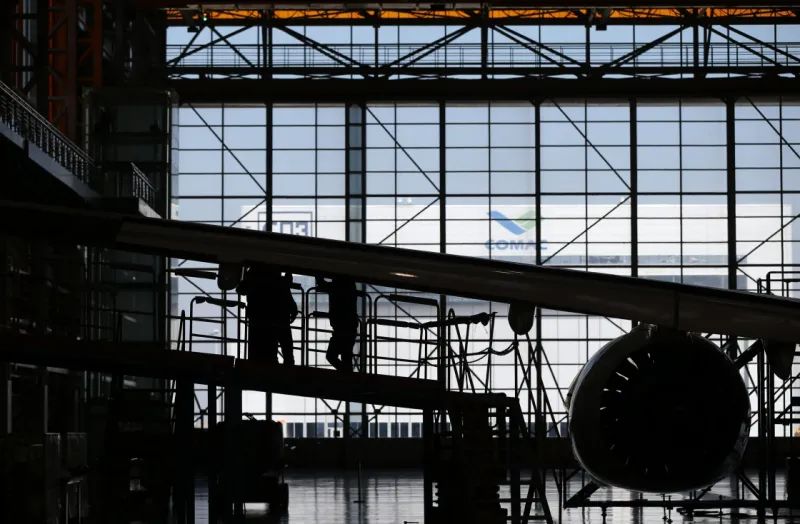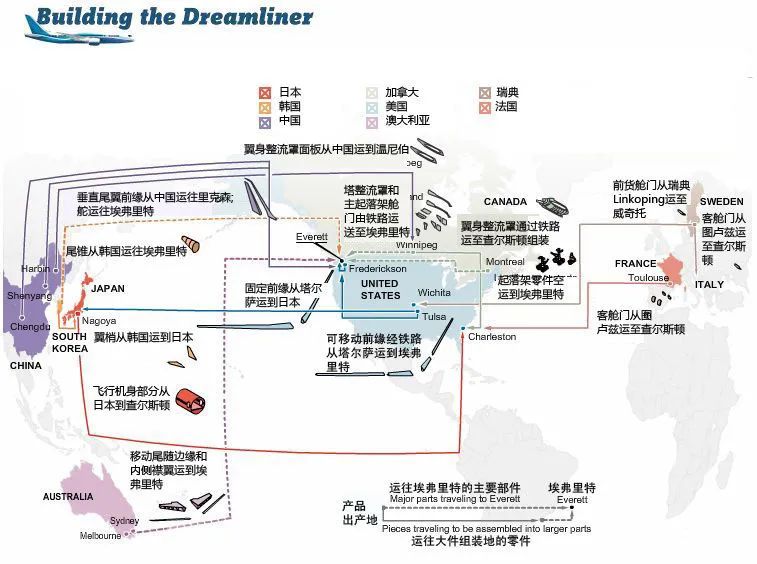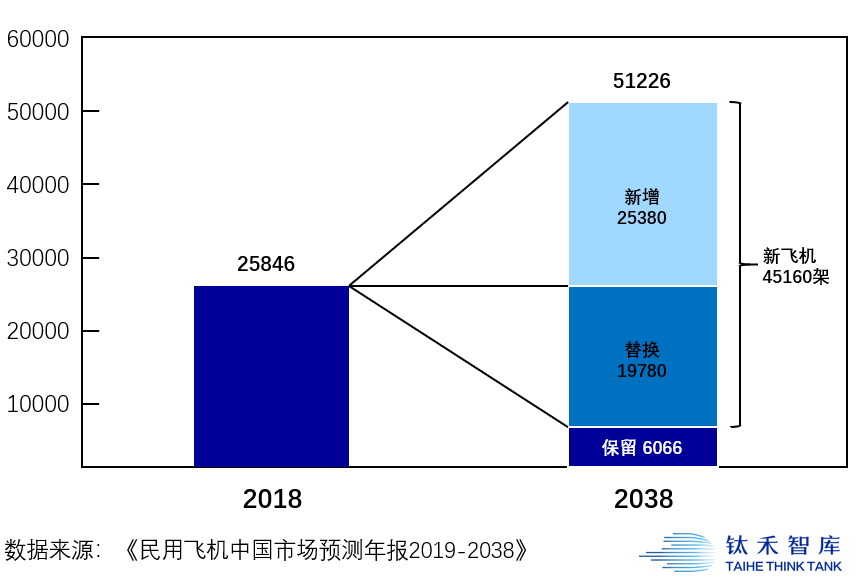The essence of not being stuck is to have the ability to deal with the worst situation at any time.
Editor’s note: This article comes from WeChat public account “Titanium Industry Watch” (ID: Taifangwu) .
Author | Li Fuqiang
Editing Liu Aiguo
Data Support | Titanium Industry Research Institute

Changer
During the night of February 18, Beijing time, Trump tweeted four in a row. On the one hand, he angered some US institutions to create obstacles to normal trade. On the other hand, he hoped that China would continue to buy US-made engines.
“I hope China buys our jet engine, which is the best in the world.”
The crisis of “discontinued supply” seems to be lifted. The “heart” problem of the large domestic aircraft that the people worry about is temporarily resolved, but in fact, the matter is far from over.
The signs behind this American “Oolong Constant” soap opera are inextricably linked to the shutdown of the main model of the C919 in the future, the Boeing 737MAX.
For some interest groups who insist on “breaking the confession”, worrying about “reverse engineering” is just a sound excuse. Their real intention may be just to disrupt the pace of development of potential opponents in order to give Boeing, which has been troubled in recent years, a first-line respite.
But for another part of the interest group, “discontinued supply” may lead to an instant cut in sales of Leap-1X engines, adding to GE ’s huge losses due to the 737MAX shutdown.
What this “American characteristics” political game reflects is actually the “fairy fight” between the two giants, aircraft manufacturing and aviation supply. Regardless of the subsequent trend of the incident, for Chinese who are looking forward to the domestically produced large aircraft Phoenix spreading their wings, the signal this incident sends us is: the awareness of the supply chain crisis of domestic models needs to be strengthened.
1 What happened to Boeing?
On February 5, a Boeing 737-800 passenger aircraft of Pegasus Airlines slipped off the runway when landing and the fuselage was broken into three sections. This is a short period of more than a year. Following the two plane crashes of “Lion Airlines” and “Egypt Airlines”, Boeing models have once again become the protagonists of the accident.
Although this incidentTherefore, the responsibility lies more with the airline company, but it will undoubtedly bring another blow to Boeing, which is taking a “bad luck”. Just ten days ago, Boeing’s new wide-body airliner 777X just flew for the first time.
Americans have high hopes for this first flight, hoping to “restore reputation” for Boeing in one fell swoop. Not long ago, Boeing had just performed a series of major operations on itself-two days before Christmas 2019, Dennis Millenberg, CEO of Boeing for four years, announced his departure. Almost at the same time, Boeing finally broke its wrist, announcing the 737MAX, the youngest member of the narrow-body family.
![Barrels in the supply chain: Looking at large domestic aircraft from the]()
December 17, 2019,
Boeing announces suspension of 737MAX production line in January 2020,
It has been 9 months since the grounding of the 737MAX
Milenberg’s departure doesn’t seem to regret many people. The media mentioned his resignation and almost always added the word “blame”. The old man, who had occupied the best time and place, took the best time in the aviation industry when he took office, but he played a good hand.
The CEO, a technical engineer by background, was obsessed with advancing a cost control measure called the PFS program during his tenure. PFS, originally intended as “Partnering for Success”, has brought about consequences that are not “win-win”-as Boeing has been asking for price reductions, it has to undertake the most profitable maintenance tasks. The plan was interpreted by some suppliers as “Pilfering from Suppliers.”
The increase in profits achieved by treating suppliers harshly does not fortify Boeing, but puts both sides into a “prisoner’s dilemma”.
In fact, as early as Millenberg’s tenure, it can be seen from the research and development of the 787 project that the problem of Boeing supplier management has already begun.
Perhaps because it is called the Dreamliner, Boeing made many wild attempts on the 787. For example, the concept of “engine interchange” was proposed in the design, and a large proportion of materials replaced composite materials. In terms of supply chain management, Boeing has also made a big bet-advancing the project in accordance with the model of “risk sharing and benefit sharing”, not only allowing suppliers to manufacture parts for them, but even boldlyLet go, involve suppliers in design work, and transfer project risks and responsibilities to more than 50 first-tier suppliers.
For a while, the world was building airplanes for Boeing.
This unconventional confidence is that Boeing believes that based on long-term theoretical research and guidance to supplier practices, downstream suppliers may already have sufficient capacity to support the entire project. But “Dream” was finally shattered by reality, leaving Boeing’s walker, suppliers found that their ability was far from supporting this highly integrated and huge system.

Boeing 787 global supply chain collaboration diagram
In March 2008, the Boeing 787 airliner officially started assembly at the Everett assembly plant. At this time, engineers found that parts from around the world often had dimensional error problems that caused the parts of the body to fail to join. Fortunately, with the mature and sophisticated Boeing, the 787 was finally introduced to the market, but the series was still at a loss until the delivery of 500 aircraft, which is not really a successful model from a commercial perspective.
Domineering Boeing takes for granted that the responsibility of the main manufacturer will be spread to the supplier with subcontracting. In the end, however, it was found that the responsibility of the supplier was ultimately paid by the main manufacturer.
The wide-body machine has twists and turns, and the narrow-body machine frequently happens. Boeing, the behemoth that has dominated the global civil aviation market for more than half a century, is now struggling in the abyss. (See hereinbefore “crash scenes: Tortoise and Rabbit of Boeing and Airbus
The suspension of the 737MAX has brought a huge vacuum to the global narrow-body machine market. With the production capacity of mature Airbus models in Europe tending to be saturated, Boeing, which had not previously regarded China’s C919, had to re-examine this rival this time.

Global air passenger turnover forecast
For the Chinese who have always wanted to compete with Airbus and Boeing, the next few years will be a crucial period to re-divide the market share of narrow-body trunks. Sharpen the sword in ten years, never tried it. Under the background that the global aviation manufacturing technology has been perfected and the marginal benefits of technological innovation are diminishing, improving the supply chain, reducing costs, accelerating the test and manufacturing progress will be the job. The key to victory.

Foreground passenger aircraft fleet size forecast
To put it simply, whoever can reduce costs and increase production first can be the first to be sucked into the market formed by the 737MAX suspension.
Even behemoths such as Boeing are constantly trapped in supply chain cages in the transformation of global collaboration. For China’s large aircraft supply chain that is being explored, it is far from a “stuck neck” problem.
2 The value of a bolt
A small episode has recently appeared in an aircraft assembly shop that has just resumed work.
Has spent most of my life as an aircraft assembler.



A small episode has recently appeared in an aircraft assembly shop that has just resumed work.
Has spent most of my life as an aircraft assembler.